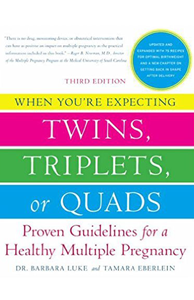Last week, the Post and Courier published an excellent story on how the majority-white Academic Magnet High School (AMHS) students are addressing their school’s lack of diversity. Through personal reflection, classroom discussion, student-organized outreach and a school-wide forum, the Magnet students have engaged in “courageous conversations” on uncomfortable topics.
As a father of two Magnet graduates, a several time thesis mentor and school volunteer, there is no one with a greater appreciation for the intellectual strength, quality of character and the oversized heart of the Magnet student. However, despite their passionate advocacy for equality and diversity, they remain conflicted by their pride over and concern for the Magnet’s superb academic reputation.
In 2015 (based on 2012-2013 data), AMHS received a #7 national rank and #1 state rank from the US News and World Report based on an index of Advanced Placement exams taken by all students and the quality of the graduating seniors. AMHS had previously made it into the national top 10 in 2013 and 2008 when AMHS was also #7.
While the student body has embraced the issue of correcting its limited diversity, the concern is still voiced that increasing racial, geographic or socio-economic diversity would necessarily compromise the high academic standards of “our school.” The reality is just the opposite. Diversity helped create AMHS and is essential to its academic success. Proposed policy recommendations to increase school diversity through geography or lottery-based seat allotments for incoming students have not been endorsed by either the majority of the student body or their families.
As parents, teachers and administrators squabble over this issue and impose on the students to come up with solutions, it’s only fair for the students to know how they got where they are today. AMHS students appreciate the importance of understanding history. Both Buist Academy and the AMHS were created in an effort to draw white students back to the almost 100% minority Charleston peninsula public schools (District 20).
To meet the mandates imposed by federal desegregation lawsuits, Buist Academy was established with the requirement that it be a “60-40 school” reflecting the 40% African-American population of Charleston County. Buist has 4 lists for admission including relatively equal numbers of seats for siblings, District 20 students, county-wide students and students from Low Performing Schools, but the final enrollment had to be 40% minority. The school thrived and Buist became the primary feeder school for AMHS before it earned its national reputation.
Those are the students who, in the mid-2000s, earned AMHS its first national recognition in 2008. In 2005, 118 of 506 (23%) of the students at AMHS were black. Ten years later in 2015, only 12 of 650 (2%) students at AMHS are black. What happened?
As the academic success of Buist Academy and AMHS became apparent through the mid and late 1990s, the pressure mounted to change admission guidelines. Who wouldn’t want their child to get the best education available for free rather than paying college tuition costs for grade school? A lawsuit in the mid-2000s brought by disgruntled parents killed the 60-40 race-based requirement at Buist Academy. After that ruling, the percentage of minority students attending Buist Academy declined dramatically; replaced primarily by white students from the more affluent suburbs across each river. As Buist changed, and the school district’s commitment to diversity waned, the number of black students at AMHS ultimately, but inevitably fell. Which brings us to where we are now.
The solution is obvious. Admission requirements at both Buist and AMHS have to reach out to the best students at every elementary and middle school in Charleston County. Minimum academic requirements must be maintained, but assuming they’re met, then the top students from every district school should be represented at Buist and AMHS.
“But not at the expense of the school’s academic standards,” is the retort. A retort that the school administrators know, or should know, is a canard. There is no evidence that increasing diversity in this manner will compromise the high academic achievement demonstrated by Magnet students. Remember, it was exactly this kind of geographic lottery that built AMHS in the late 1990s through the mid-2000s and resulted in the school’s first recognition as a top ten national school in 2008. It’s much harder to gain that kind of recognition than it is to keep it.
I challenge the Charleston County school district (CCSD) administrative people to provide any evidence that SAT scores, Advance Placement scores, graduation rates, college admission rates or any other academic indicator have improved as the minority representation at AMHS has fallen from approximately a third of the student body to its current 2%.
If AMHS can’t take bright, motivated students who have excelled in their neighborhood middle schools and are willing to travel an hour each way to attend AMHS from the farthest corners of the county, and still be academically successful, then it isn’t as good a school as we think it is. It shouldn’t need to stack the admissions deck. The benefits of increased racial, socio-economic and geographic diversity are already apparent to the current, and particularly the former, AMHS students. They are addressing it head-on and engaging in “courageous conversations.”
My only disappointment with the Post and Courier article is the implication that the student body’s late to the table appreciation for diversity might somehow be responsible for the school’s problem. The students are not the problem. Nor should the teachers, principal or the coaches be scapegoated. The diversity problem lies solely with the CCSD leadership and its failure to stand up to wealthy, privileged and politically connected families and friends. The district offices and the school board is where the “courageous conversations” are needed.
The only remaining question is whether our elected and appointed school leaders have the strength and will to do what needs to be done. Personally, I’m skeptical. However, the hopeful news is that the current Magnet students and voters of the future already know what needs to be done.
OH, BY THE WAY, the school that the Academic Magnet is chasing (as is every other public school in the country) is the Magnet School for the Talented and Gifted (TAG) in Dallas, Texas. TAG has been the #1 ranked public school in the US for the past 4 years with a student body that is 36% white, 25% Asian, 14% black and 23% Hispanic. In case anyone in the school district office is interested, this is accomplished with a rubric where 30% of the incoming freshman seats are given to the district applicants with the highest total application scores (merit-based) while 70% are awarded to students with the highest application scores in the respective Dallas school district feeder patterns competing only against other students in their feeder pattern (merit and geography-based). See, that wasn’t so hard.
I have been an employee of the Medical University of South Carolina for over thirty years. However, this is a personal blog and the opinions expressed are mine alone and not those of my employer.








Great article!
Thanks Erica. Glad that you are reading my blog. The Blog this Sunday will be more tongue in cheek. Let me know if you like it or offended. Either way is a good blog !!! 🙂
Dr. Roger I think that it is important to stress the Academic Magnet High School originated on the Burke Campus (1988), a predominately African American High School. Burke is now devoid of programs to meet their own cluster offerings. It also does not meet the demographic make up of the area it serves. So of course students at Burke would have a hard time at any excellent school. The goal of the CCSD should be to make all schools equal to programs like Academic Magnet, but it is not. Fact is schools like Academic Magnet and Buist were essentially taken from the African American community. As for Buist, it mostly meets its objectives as far as student diversity because of a group of parents a few years ago who filed lawsuits and filed office of civil rights complaints. This also is most likely why now Burke also offers required math programs and has a full time spanish teacher. Fact is Academic Magnet is not open to all, if feeder schools in predominately African American areas also have the same subpar education as Burke.
Tara, You are absolutely right that the original AMHS was on the Burke campus. I do not know why it was moved to the old naval base. You are also right about how African American students are being excluded now . That was not always true- when my son and daughter went to AMHS (2000-2004 and 2006-2010)the minority enrollment was > 30% and that contributed to the success of the school. Now, minority students do not feel welcome and /or do not qualify because of the inadequacies of the home middle schools and have been squeezed out of Buist. However , that could be fixed with an admission policy that took the most academically accomplished students from all the feeder districts in Charleston Co. Motivated students who have accomplished as much as they can with whatever resources they have available to them should be welcomed at the AMHS. If the Magnet can’t mold outstanding students out of motivated high achievers from all backgrounds than it isn’t the school that I believe it to be……………………roger